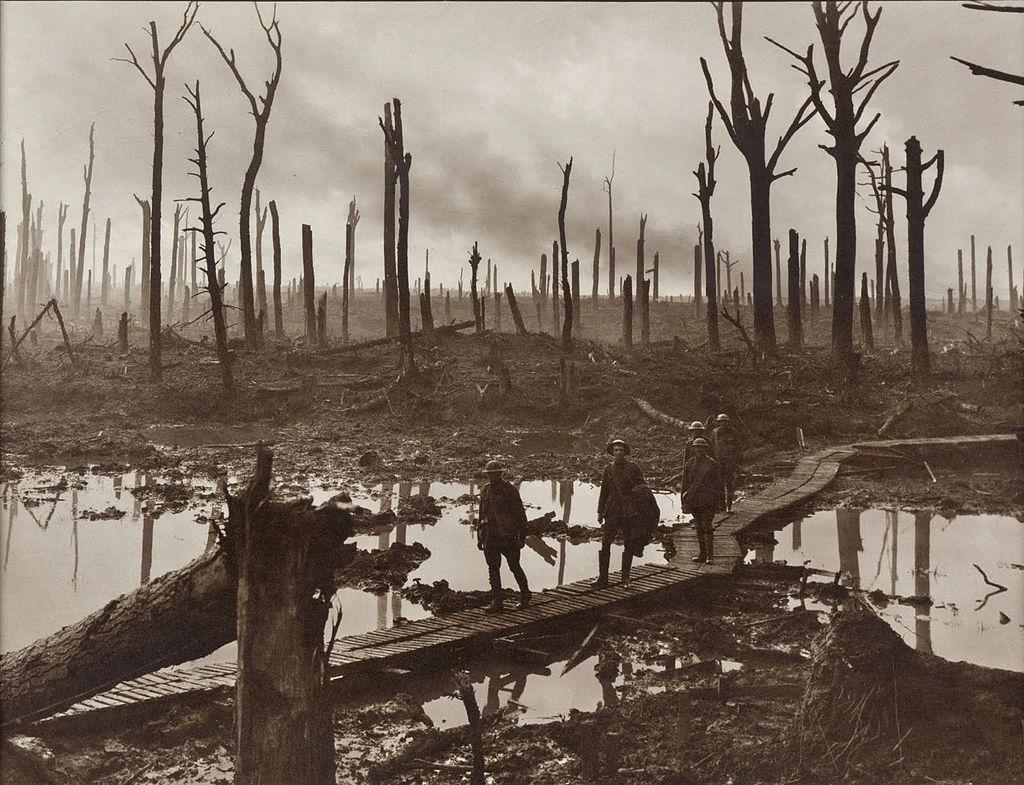This offensive which included several major operations called the Third Battle of Ypres, is also more commonly known as the Battle of Passchendaele. It was designed to break the German defensive hold on the salient around the Belgian city of Ypres and then drive forward to secure major Belgian ports on the Channel coast. The offensive began on 31 July 1917 in good weather. All five Australian divisions and the New Zealand Division were in action at various times as part of General Plumer’s Second Army. Australian divisions first became involved at the battles of Menin Road and Polygon Wood in September, then at Broodseinde, followed by Poelcappelle and then finally at Passchendaele in October. Unfortunately the final outcome of these operations was influenced by the arrival of bad weather in the form of continuous heavy rain. The whole battlefield became an impassable bog of deep mud. The British High Command called off the offensive on 10 November with no strategic gains having been made. Casualties from this campaign were horrendous, with the Allied total being around 310,000 men. The Australians lost 38,000 men, making it the worst year of the war for our own losses. This left an insurmountable problem for the Australian Government of finding more volunteers to fill the dwindling numbers in every unit, as the nation had twice rejected the notion of Conscription in two plebiscites conducted in 1916 and 1917.
Ypres
This listing remembers the battles of the Ypres salient in Belgium from the end of July to November 1917.



